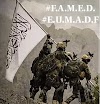Betacornavirus
Sequences in Saudi Arabia and Qatar Match
Recombinomics,
November 24, 2012
The above phylogenetic tree depicts the full sequence of the Health Protection Agency isolate, England1_CoV (in red box). Like the earlier tree of the small insert (called London1_novel_CoV_2012), the sequence is most closely related to bat coronavirus sequences from Guangdong Province (Bat-CoV-HKU4 or Bat-CoV-HKU5). Similarly the full sequences was 99.5% homologous to the EMC/12 sequence from the Qatar case, confirming that both cases where infected by a novel betacornovirus (labeled 2c in the above tree).
Although the two most human sequences are most closely related to the 2c bat-CoVs, the human sequences are readily distinguished from the bat sequences, which are 86.4% homologous. Moreover, the 2c branch is flanked by human coronovirus in the branch above (2b, which is mislabeled in the figure as 2a and populated by SARS-CoVs) as well as human isolates in group 2a (HKU CoVs or HCoV-OC43) located below the 2c branch.
As seen in the phylogenetic tree, CoVs are found in multiple species and the human cases are not due to transmission from bats to humans. As seen in the SARS branch, the bat sequence (SARS-bat_HKU3-1) is easily distinguished from the human sequence from Toronto (SARS-human_Tor2), which is closely related to other animal isolates from Shenzhen including a palm civet cat (SARS-civet_SZ12) and badger dog (SARS-badger_CFB/SZ/94/03). Similarly, the human OC43 group 2a isolate is easily distinguished from related 2a sequences from a cow (BCoV-ENT) or antelope (AntelopeCoV_US/OH1/2003D1418).
Thus, there is no data suggesting that the recent cases are linked to bat or other animal exposures, in part because all of the novel sequences or confirmed cases are from humans, including two confirmed and two suspect cases from the same family in Riyadh, Saudi Arabia, media reports notwithstanding.
All six confirmed novel betacoronavirus cases have been human, and no reported animal contacts have been reported as symptomatic or betacornavirus confirmed. Moreover, the first two confirmed cases had renal failure suggesting they represented a small subset of severe cases with viral RNA levels sufficiently high enough to be detected by the pan-coronavirus PCR test. The negative test in one of the current symptomatic cluster member suggests there are still sensitivity issues associated with the collection/testing of cases which are likely betacornovirus infected. Negative test results were also reported for symptomatic contacts of the first Qatar case, which included health care workers.
The recent sequences clearly define a novel human pathogen, and the Riyadh cluster strongly suggests the novel hCoV is transmitting human to human in multiple countries, which has led to an WHO recommendation of broader testing.
http://www.recombinomics.com/News/11241201/Betacoronavirus_Full_Sequences.html






0 Comments